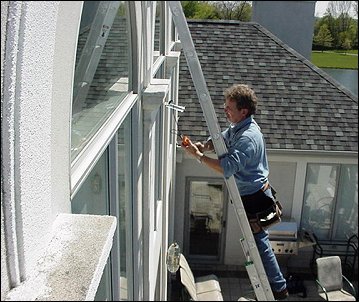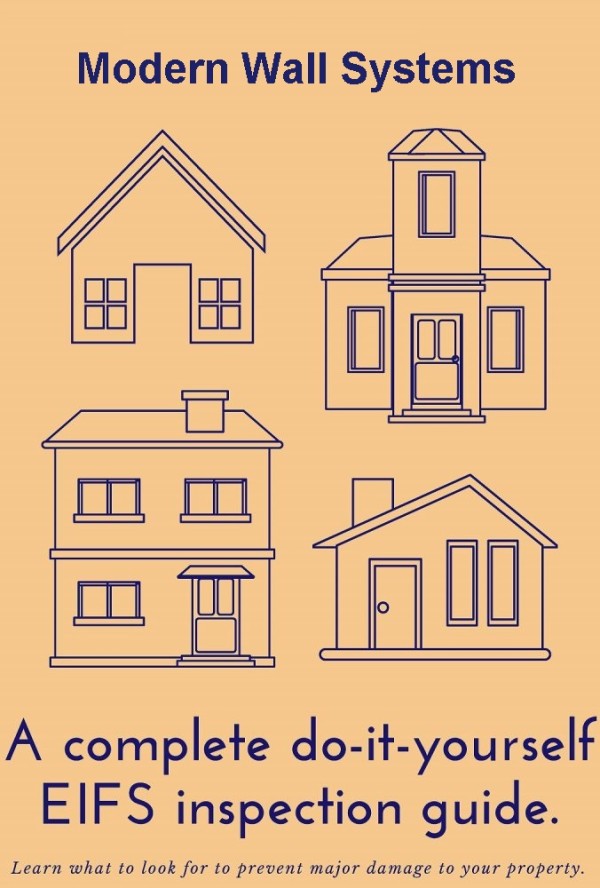EIFS inspections don’t require a whole lot of tools and equipment. In fact, you really only need three pieces of equipment.

Aluminum Ladders
Aluminum ladders are lighter than most fiberglass options without compromising stability,, making them ideal for household jobs like painting. However, they are electrical conductors, so if you’re planning on doing electrical work, use a fiberglass ladder instead.
Fiberglass Ladders
Fiberglass ladders are typically more durable, stable, and heavier than aluminum or wood models. They’re weather- and flame-resistant, and they are not conductors of electricity, making them the best choice if you’re working near power lines or electrical wires.
Wood Ladders
Wood ladders are sturdier than you might think. However, they can erode with time and when exposed to water and humidity. They are technically non-conductive, but they can be conductive when wet and some have metal bearings that are conductive.
Height
The height of a ladder and its reach height are two different considerations. Before starting your project, measure the height of the space you’re working in, whether that’s the height of your ceiling or roof. Different ladder styles have different reach heights to keep you safe while working. Step ladders typically have a reach height of 4 feet above the ladder height: meaning an 8-foot ladder has a 12-foot reach height. Multi-position ladders have a 1-foot reach height above the ladder height, and extension ladders have a reach height that’s 1 foot less than the height of the ladder. If you’re looking for an attic ladder or fire escape ladder, measure the ceiling height or height from your window to the ground.
Safety
Safety is the most important thing to keep in mind when using ladders, so make sure you’re using the right ladder for the right job. Every ladder has a weight capacity and duty rating ranging from Type 3 to 1AA. Type 3 starts at a weight capacity of 200 pounds and is recommended only for indoor household use. Type 1AA is the most sturdy ladder with a weight capacity of 375 pounds for professional and home use.
When using a ladder, double-check that it’s positioned correctly and on stable ground. It’s also a good idea to have someone around to spot you or provide extra stability.
# 2. Moisture Meter: NEVER POKE HOLES IN YOUR EIFS. INSIST ON NON-INVASIVE INSPECTIONS. High levels of moisture that go untreated are the main cause of harmful mold growth in the home. With the MM9 combo moisture meter, scanning large areas of EIFS is easy with the pinless pad sensor. Once moisture patches are detected, flip open the cap to expose the pin sensors for more exact moisture content readings. 
- Water damage is the first sign of mold
- Use scanning pinless pas sensor to detect general areas of moisture
- Use the pins to find exact moisture content to know just how bad the damage is
- Follow moisture to its source to prevent further damage
- Check over time to be confident the problem is solved
# 3. Smart-Phone: It takes you very little time to take a photo with your smartphone camera and sharing photos is a snap.

Need more help with this?
Don’t hesitate to contact us here.



